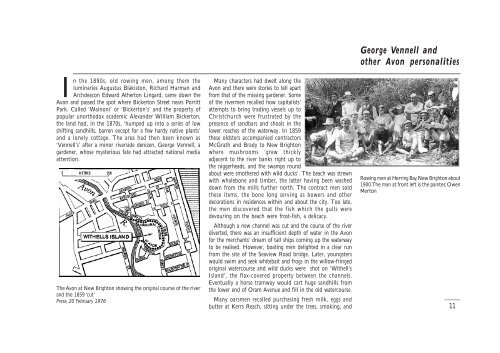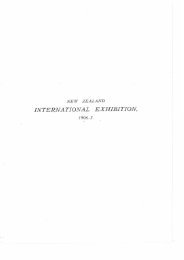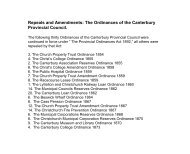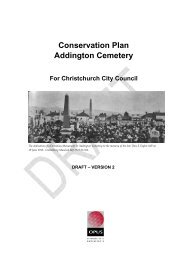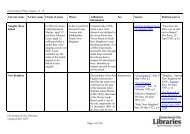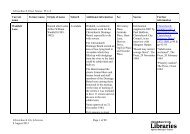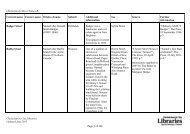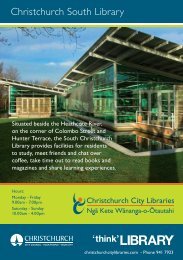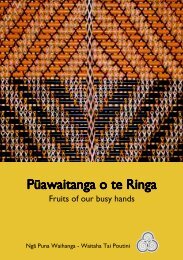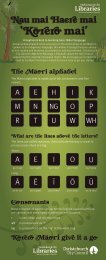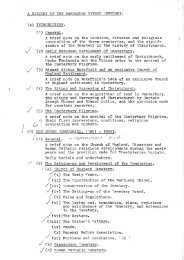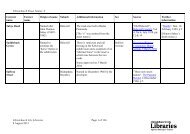Rich man, poor man, environmentalist, thief - Christchurch City ...
Rich man, poor man, environmentalist, thief - Christchurch City ...
Rich man, poor man, environmentalist, thief - Christchurch City ...
You also want an ePaper? Increase the reach of your titles
YUMPU automatically turns print PDFs into web optimized ePapers that Google loves.
In the 1890s, old rowing men, among them the<br />
luminaries Augustus Blakiston, <strong>Rich</strong>ard Har<strong>man</strong> and<br />
Archdeacon Edward Atherton Lingard, came down the<br />
Avon and passed the spot where Bickerton Street nears Porritt<br />
Park. Called ‘Wainoni’ or ‘Bickerton’s’ and the property of<br />
popular unorthodox academic Alexander William Bickerton,<br />
the land had, in the 1870s, ‘humped up into a series of low<br />
shifting sandhills, barren except for a few hardy native plants’<br />
and a lonely cottage. The area had then been known as<br />
‘Vennell’s’ after a minor riverside denizen, George Vennell, a<br />
gardener, whose mysterious fate had attracted national media<br />
attention.<br />
The Avon at New Brighton showing the original course of the river<br />
and the 1859 ‘cut’<br />
Press, 20 February 1976<br />
Many characters had dwelt along the<br />
Avon and there were stories to tell apart<br />
from that of the missing gardener. Some<br />
of the rivermen recalled how capitalists’<br />
attempts to bring trading vessels up to<br />
<strong>Christchurch</strong> were frustrated by the<br />
presence of sandbars and shoals in the<br />
lower reaches of the waterway. In 1859<br />
these oldsters accompanied contractors<br />
McGrath and Brady to New Brighton<br />
where mushrooms ‘grew thickly<br />
adjacent to the river banks right up to<br />
the niggerheads, and the swamps round<br />
about were smothered with wild ducks’. The beach was strewn<br />
with whalebone and timber, the latter having been washed<br />
down from the mills further north. The contract men sold<br />
these items, the bone long serving as bowers and other<br />
decorations in residences within and about the city. Too late,<br />
the men discovered that the fish which the gulls were<br />
devouring on the beach were frost-fish, a delicacy.<br />
Although a new channel was cut and the course of the river<br />
diverted, there was an insufficient depth of water in the Avon<br />
for the merchants’ dream of tall ships coming up the waterway<br />
to be realised. However, boating men delighted in a clear run<br />
from the site of the Seaview Road bridge. Later, youngsters<br />
would swim and seek whitebait and frogs in the willow-fringed<br />
original watercourse and wild ducks were shot on ‘Withell’s<br />
Island’, the flax-covered property between the channels.<br />
Eventually a horse tramway would cart huge sandhills from<br />
the lower end of Oram Avenue and fill in the old watercourse.<br />
Many oarsmen recalled purchasing fresh milk, eggs and<br />
butter at Kerrs Reach, sitting under the trees, smoking, and<br />
George Vennell and<br />
other Avon personalities<br />
Rowing men at Herring Bay, New Brighton about<br />
1900. The <strong>man</strong> at front left is the painter, Owen<br />
Merton<br />
11


